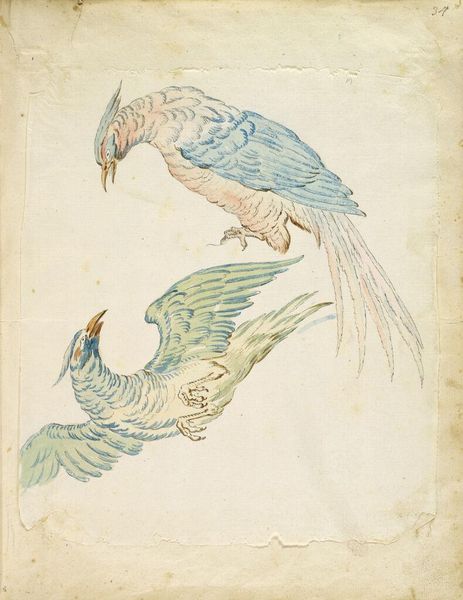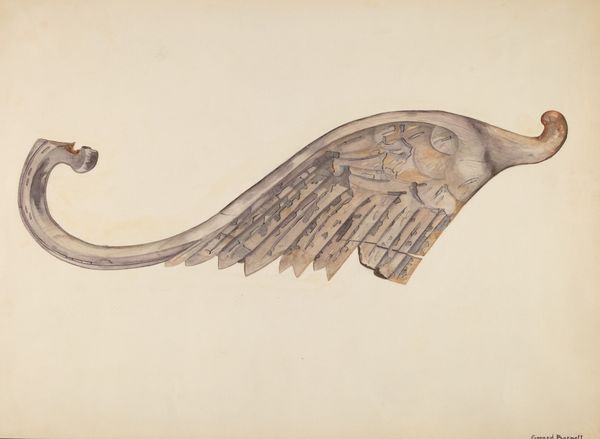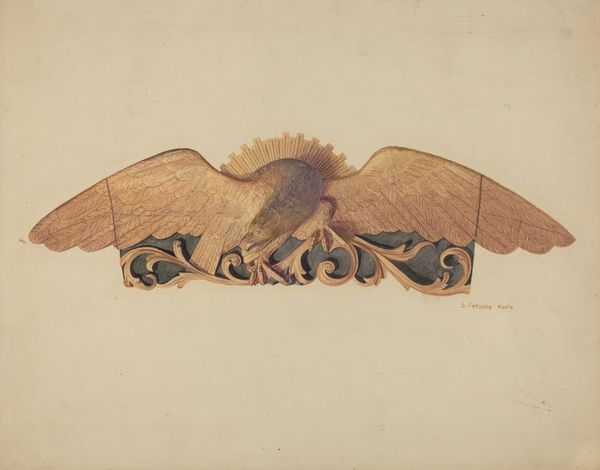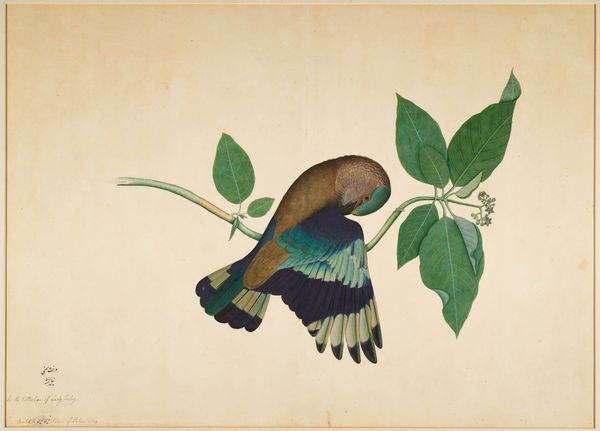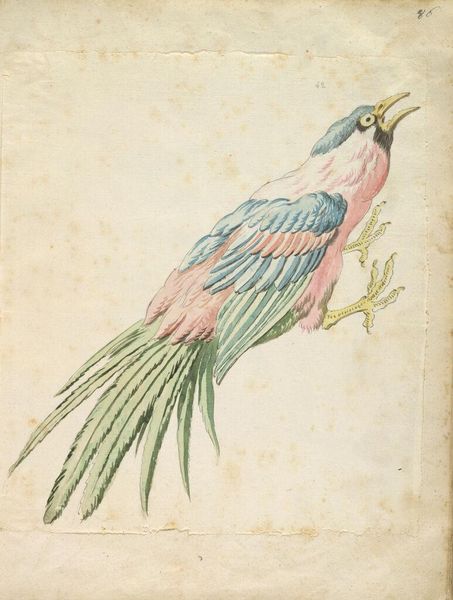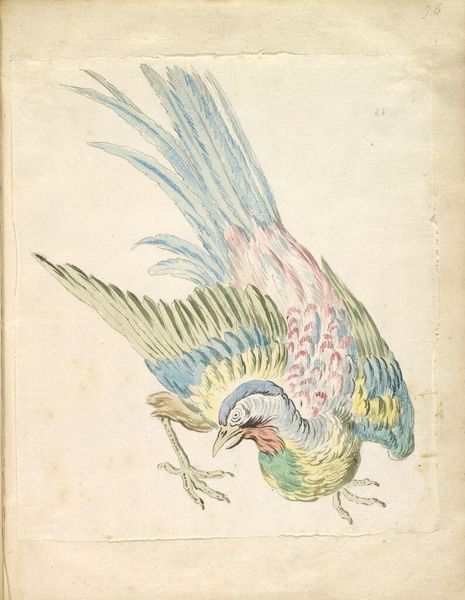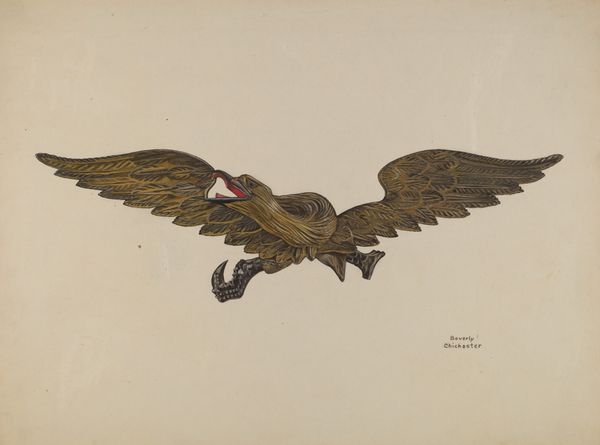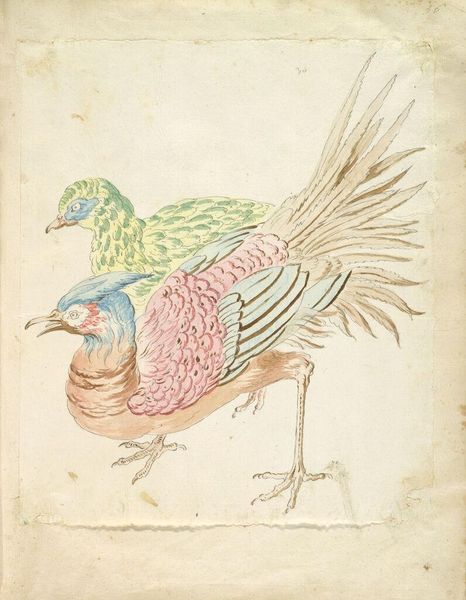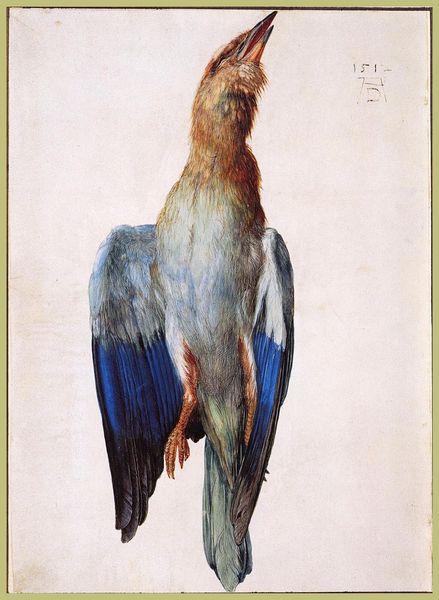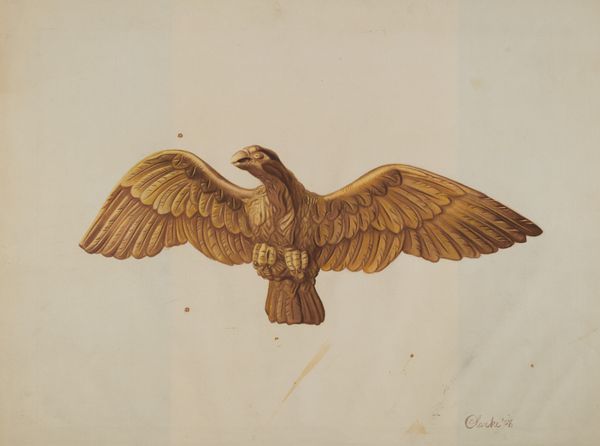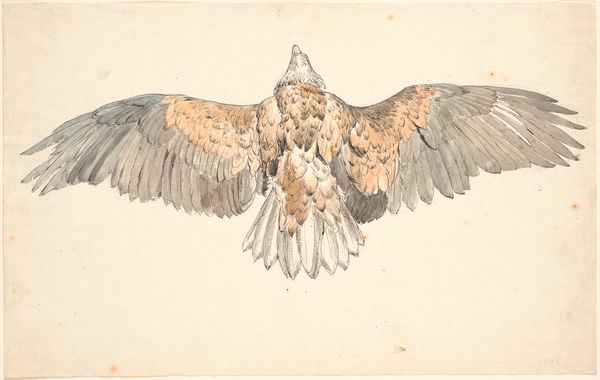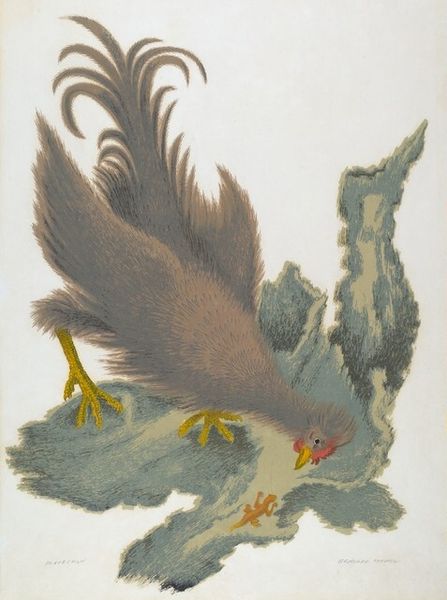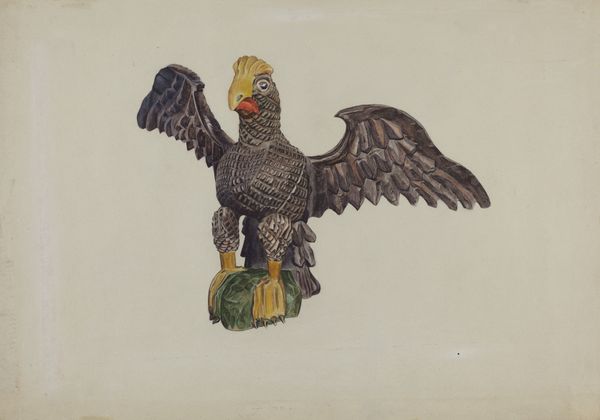
drawing, watercolor
#
drawing
#
11_renaissance
#
oil painting
#
watercolor
#
watercolour illustration
#
northern-renaissance
#
watercolor
Copyright: Public domain
Editor: Here we have Hans Hoffmann’s "Blaurackenflügel (nach Dürer)," a watercolor and drawing that recalls Dürer. I'm struck by the detail in each feather. How would you interpret this piece? Curator: I'm immediately drawn to the act of reproduction and the materials employed here. Hoffmann is not simply depicting nature, but engaging with the labor involved in copying Dürer's work, another highly skilled artist. We have watercolor, ink and the paper substrate itself: these materials hold histories of trade, craftsmanship, and artistic value. What do you notice about the paper? Editor: It looks quite aged and has some markings. Does that signify the value or historical process involved in producing paper back then? Curator: Precisely! The watermark, the texture of the paper—these all speak to a particular time and place of production. Also consider the context: this isn't just a pretty image; it's an engagement with the established art market, with the consumption and reproduction of existing artworks as commodities. Hoffmann isn't simply showcasing his artistic talent, he's navigating a pre-existing structure of art commerce. Does this change how you see the painting? Editor: It makes me consider Hoffmann’s social position as an artist in relation to both Dürer's legacy and to the collectors of his time. I hadn't thought about the economics involved, just the aesthetic value! Curator: And that's precisely the lens a materialist approach encourages! We see how art is fundamentally intertwined with labor, material, and the systems of its production and consumption. It also brings into focus that these drawings of flora and fauna often are connected to trade and colonization as source material. Editor: That really highlights the connection between the physical creation of art and its place in the world. Thanks! Curator: Indeed! Now, think about the wing’s vibrant blue color – where might those pigments have come from, and what journeys did they make before arriving on this page?
Comments
No comments
Be the first to comment and join the conversation on the ultimate creative platform.

